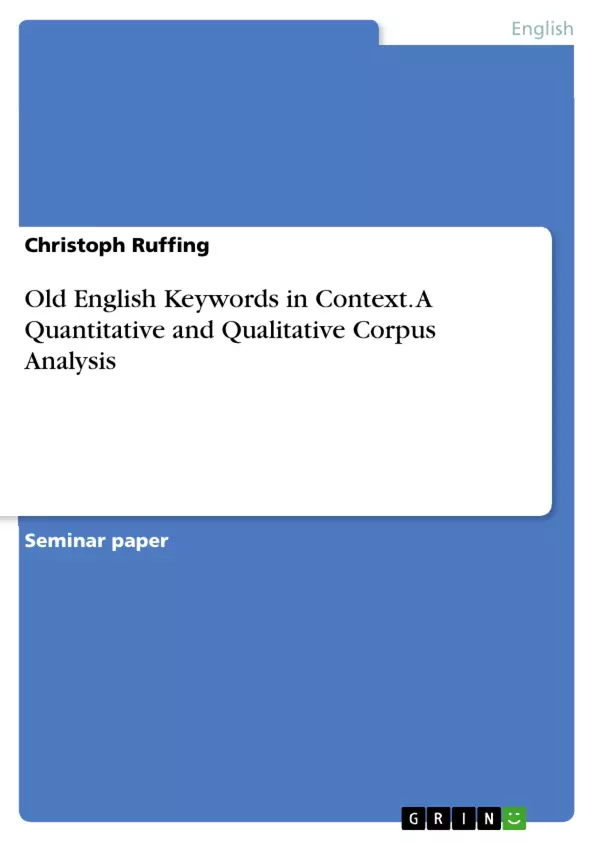In the course of this paper, Old English key words are going to be analyzed with regard to their frequency and their characteristics in the respective context. First of all, I will present the compilation of the corpus and argue why the respective sources have been chosen.
I will also demonstrate some problems coinciding with the corpus compilation, before offering approaches to the problem of how to gain key words in a diachronic text. Afterwards, I will present the most frequent key words and give a first short interpretation of the results.
All key terms are to be arranged in different semantic fields with respective subcategories and afterwards subjected to a quantitative analysis within these respective fields. Within this analysis I will start with comparing the different fields with each other, then I will compare the subcategories and finally examine the relations within the subcategories. Finally, a qualitative analysis will be performed, once again within the different semantic fields. In this respect, I will also examine the characteristics of pronouns in a separate section.
Inhaltsverzeichnis (Table of Contents)
- Introduction
- The corpus
- Old English key words
- Approaches to gain Old English key words
- Semantic fields
- Quantitative analysis
- Old English key words in context
- Politics
- Religion
- Warfare
- Population
- Nature
- Pronouns
- Conclusion
- Appendix
Zielsetzung und Themenschwerpunkte (Objectives and Key Themes)
This paper explores the frequency and characteristics of Old English key words within their respective contexts. The study aims to analyze a self-compiled corpus of Old English texts, examine the methods used to identify key words, and delve into the significance of these words in shaping the understanding of Anglo-Saxon society.
- Frequency and significance of Old English key words
- Analysis of the corpus and its limitations
- Exploring the methodology for identifying key words in diachronic texts
- Interpreting the role of key words in various semantic fields
- Examining the structure and characteristics of Anglo-Saxon society through linguistic analysis
Zusammenfassung der Kapitel (Chapter Summaries)
The introduction provides an overview of the study's scope, outlining the research objectives and the methodology employed. Chapter 2 delves into the compilation of the corpus, discussing the texts included, the challenges faced during compilation, and the rationale behind the selection process. Chapter 3 explores different approaches to identify key words within a diachronic corpus, highlighting the difficulties arising from translation and the limitations of existing tools. It then presents the most frequent key words, analyzes their distribution across various semantic fields, and outlines the quantitative analysis methodology.
Schlüsselwörter (Keywords)
The research focuses on the analysis of Old English key words, utilizing a self-compiled corpus of Old English texts. Key themes include the frequency and significance of these words, the challenges of identifying them in a diachronic corpus, and the implications of their distribution across various semantic fields. The study explores the importance of key words in understanding the structure and characteristics of Anglo-Saxon society, focusing on aspects such as social hierarchy, the role of religion, warfare, and everyday life.
- Quote paper
- Christoph Ruffing (Author), 2008, Old English Keywords in Context. A Quantitative and Qualitative Corpus Analysis, Munich, GRIN Verlag, https://www.grin.com/document/143742



